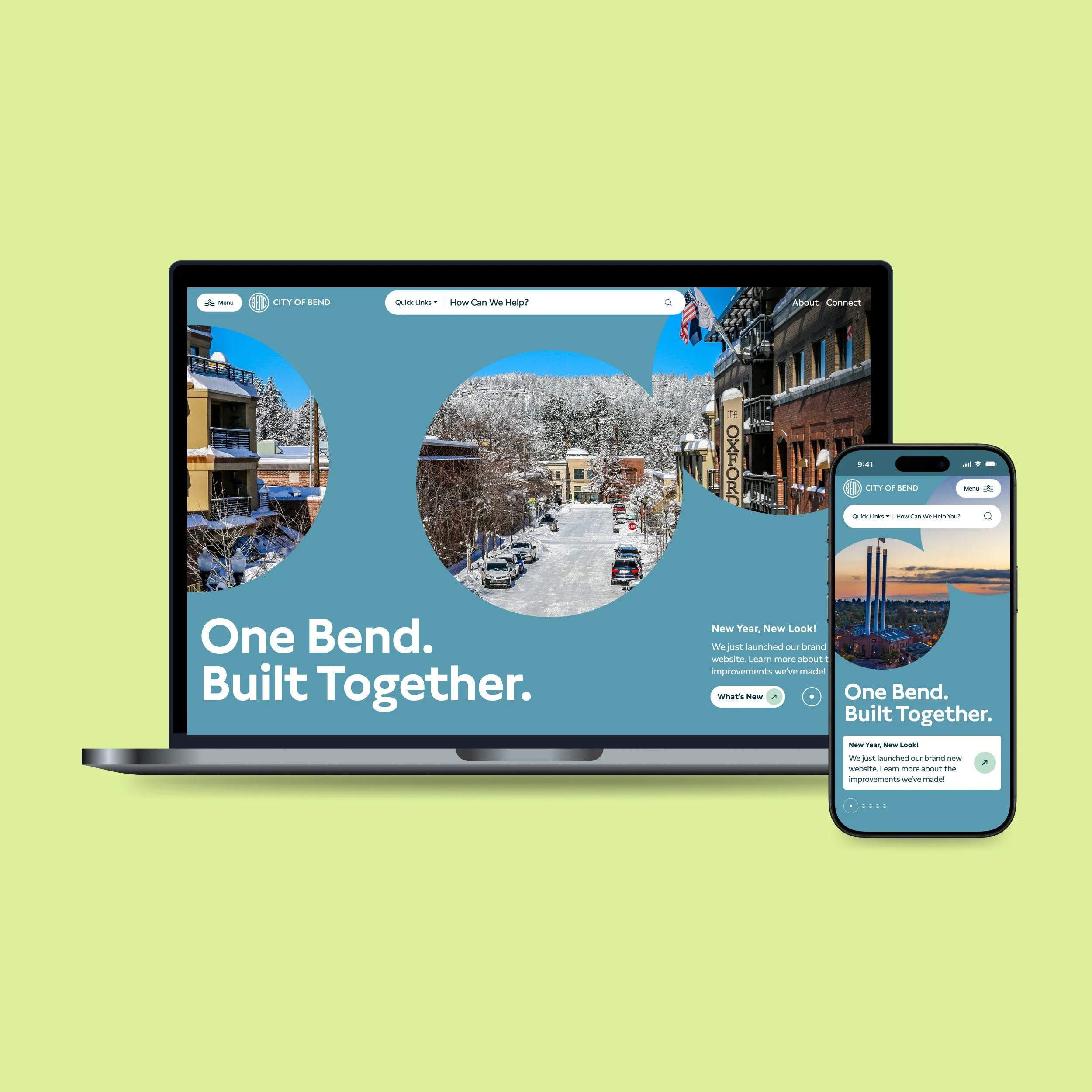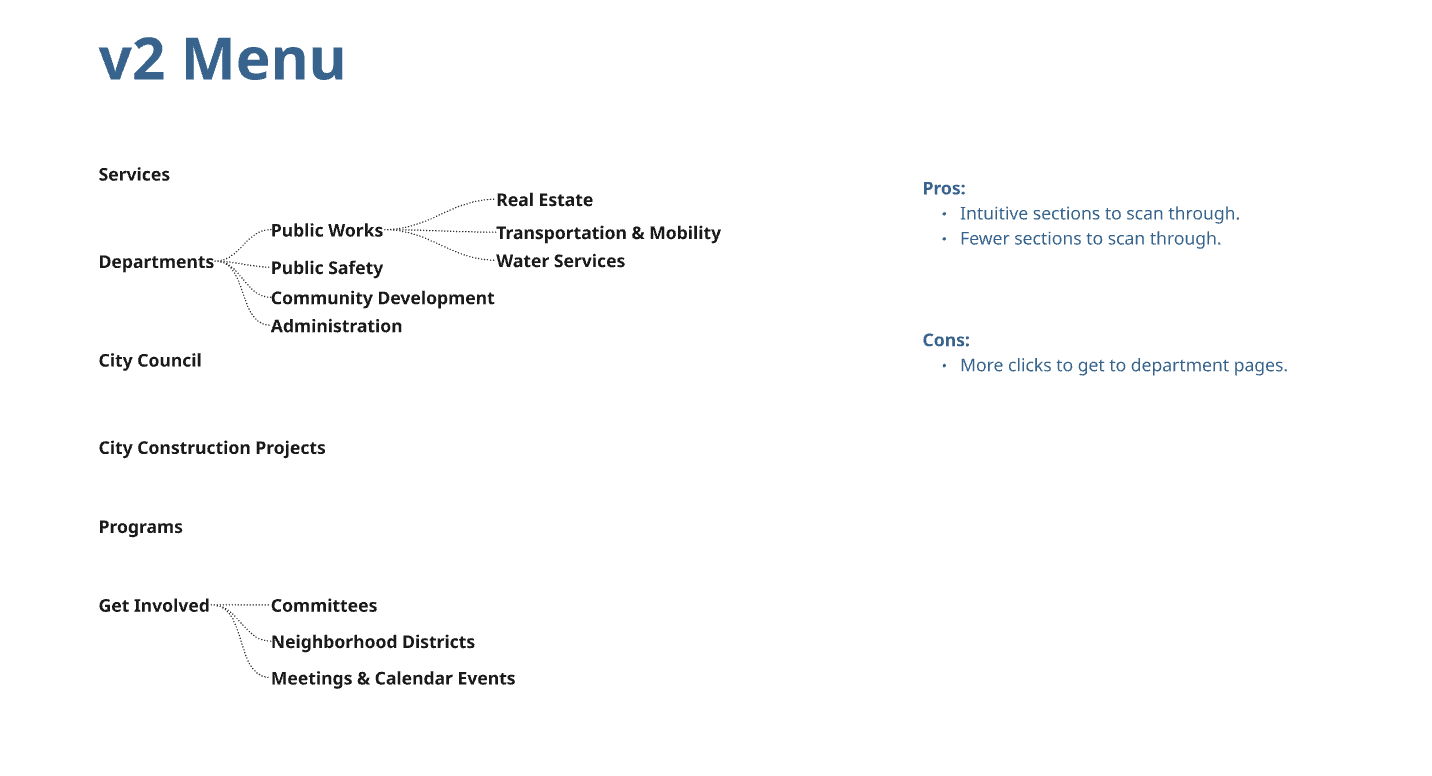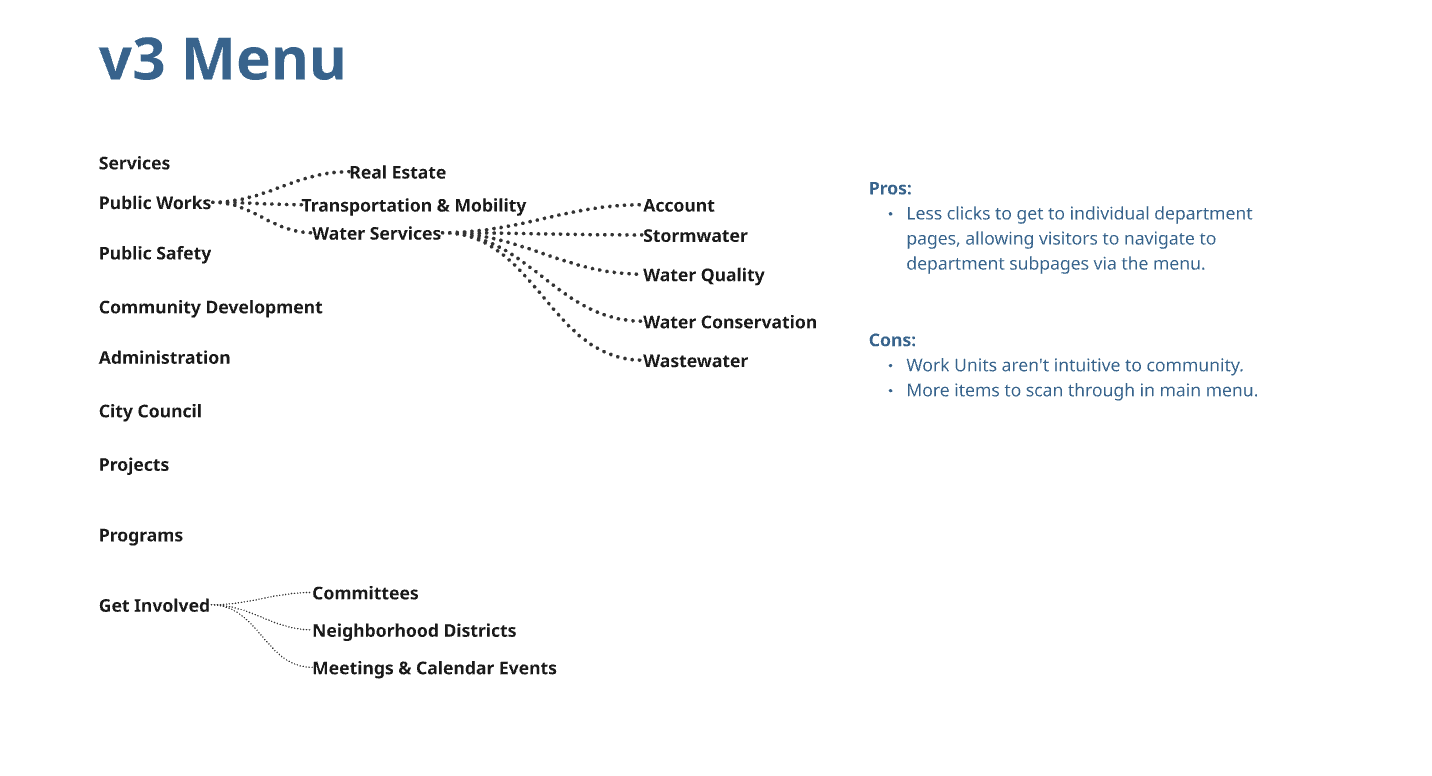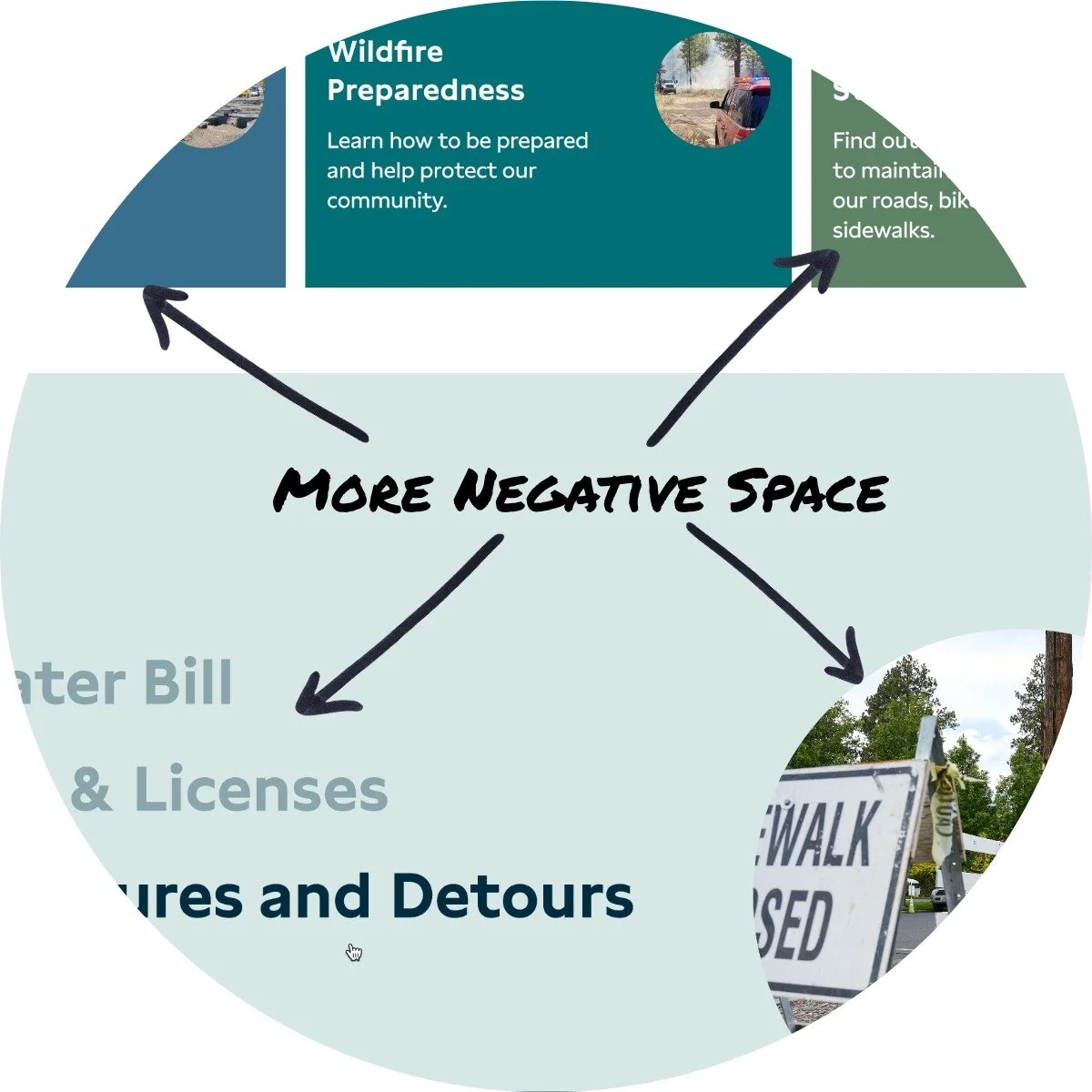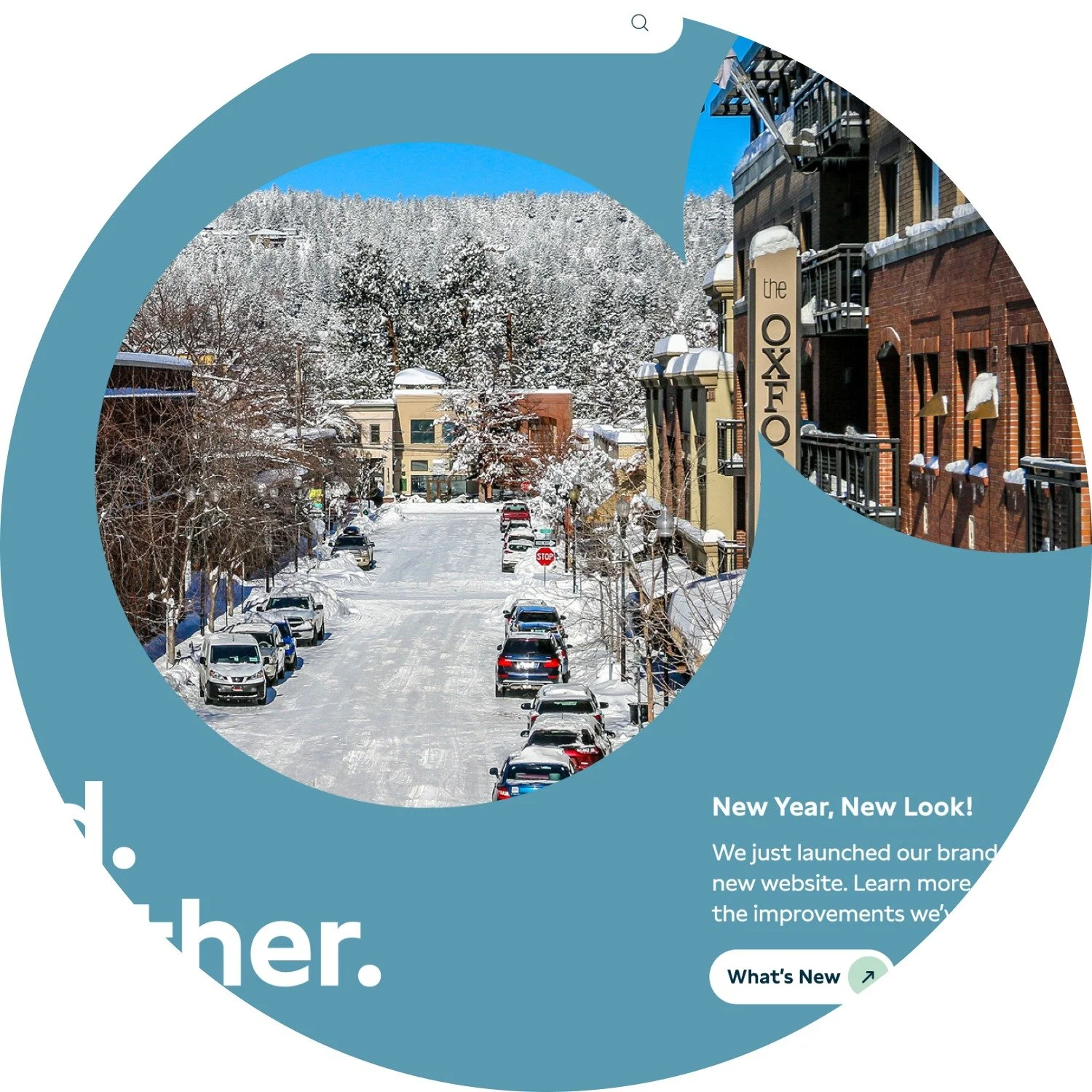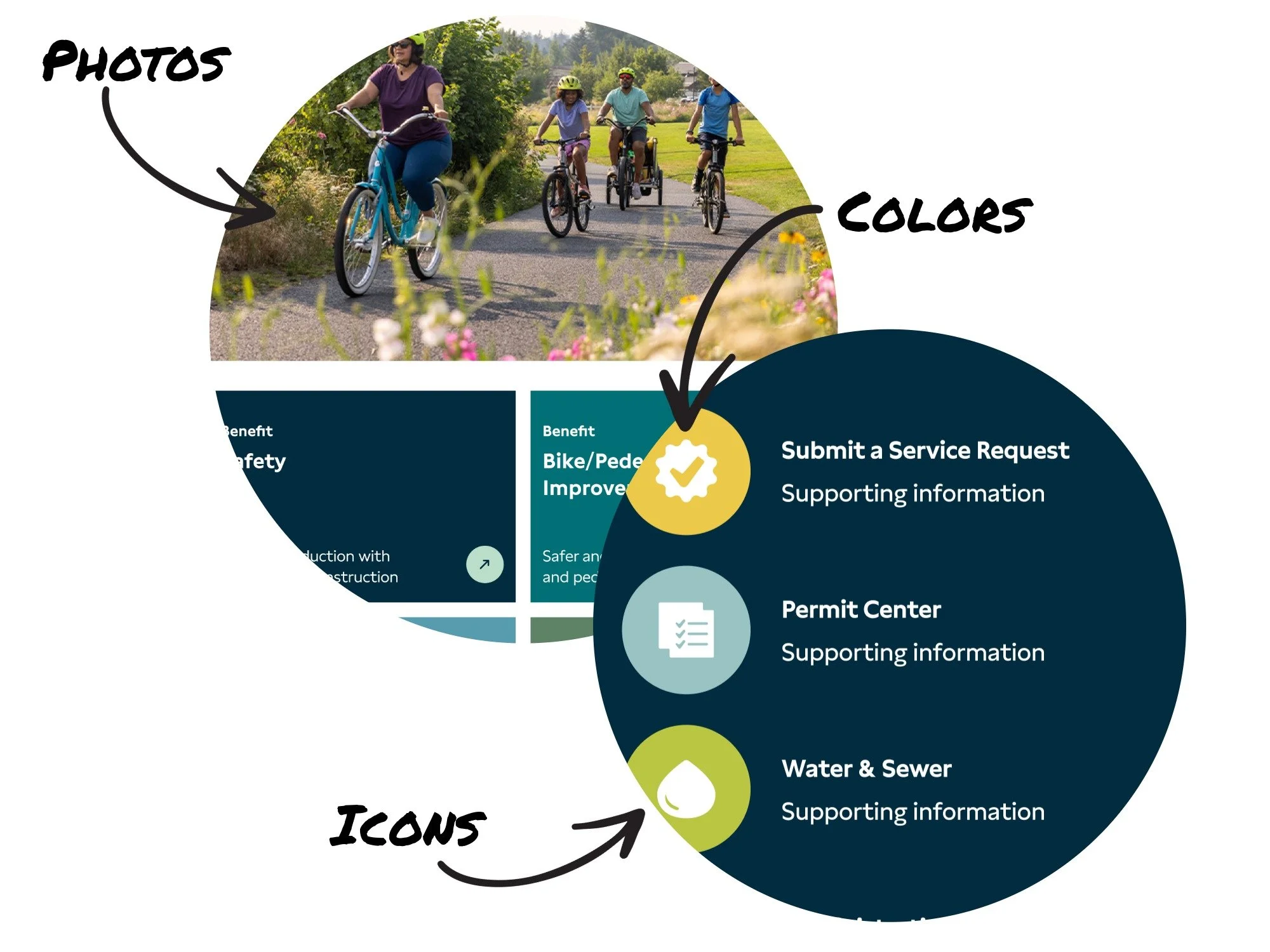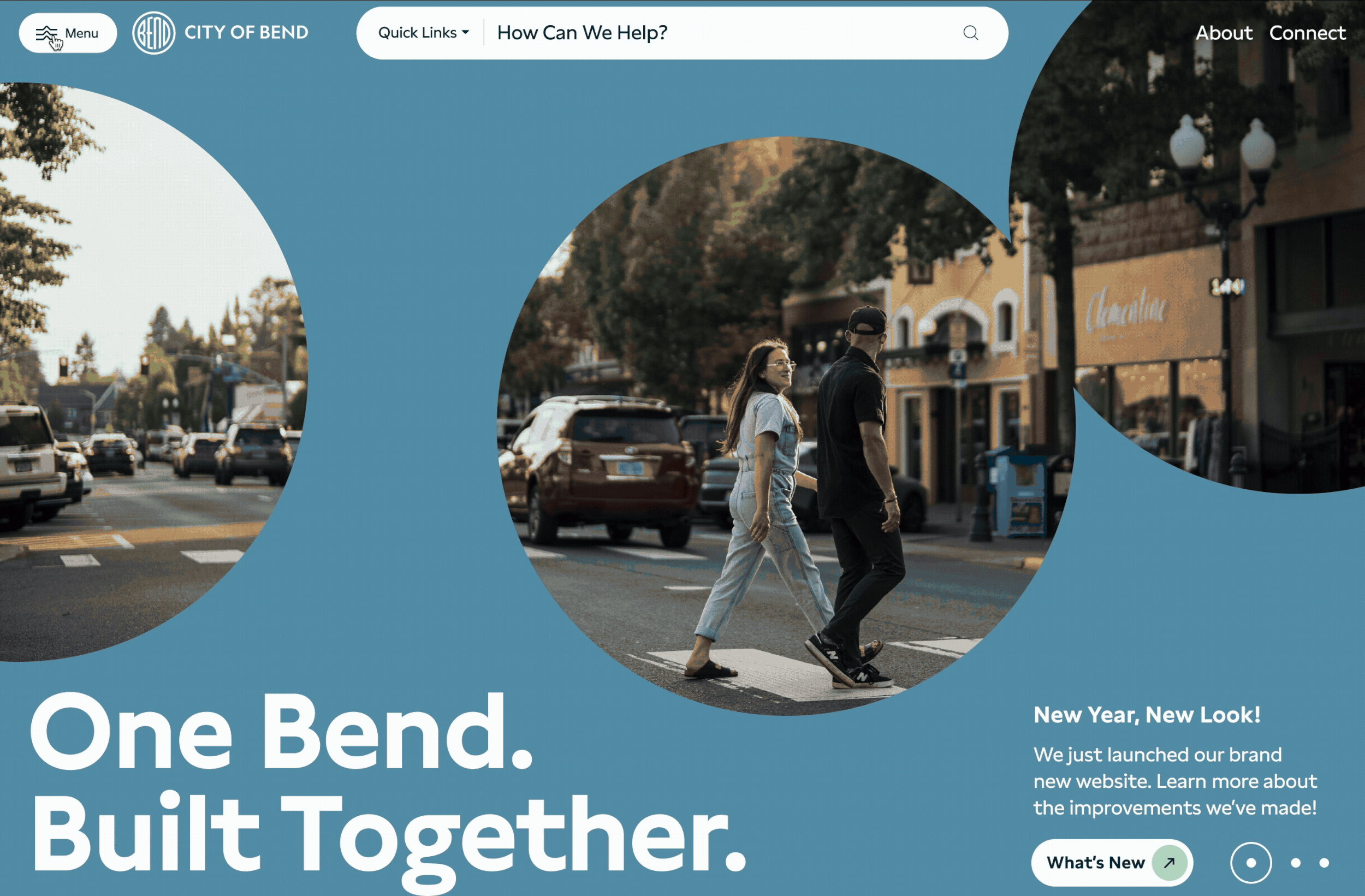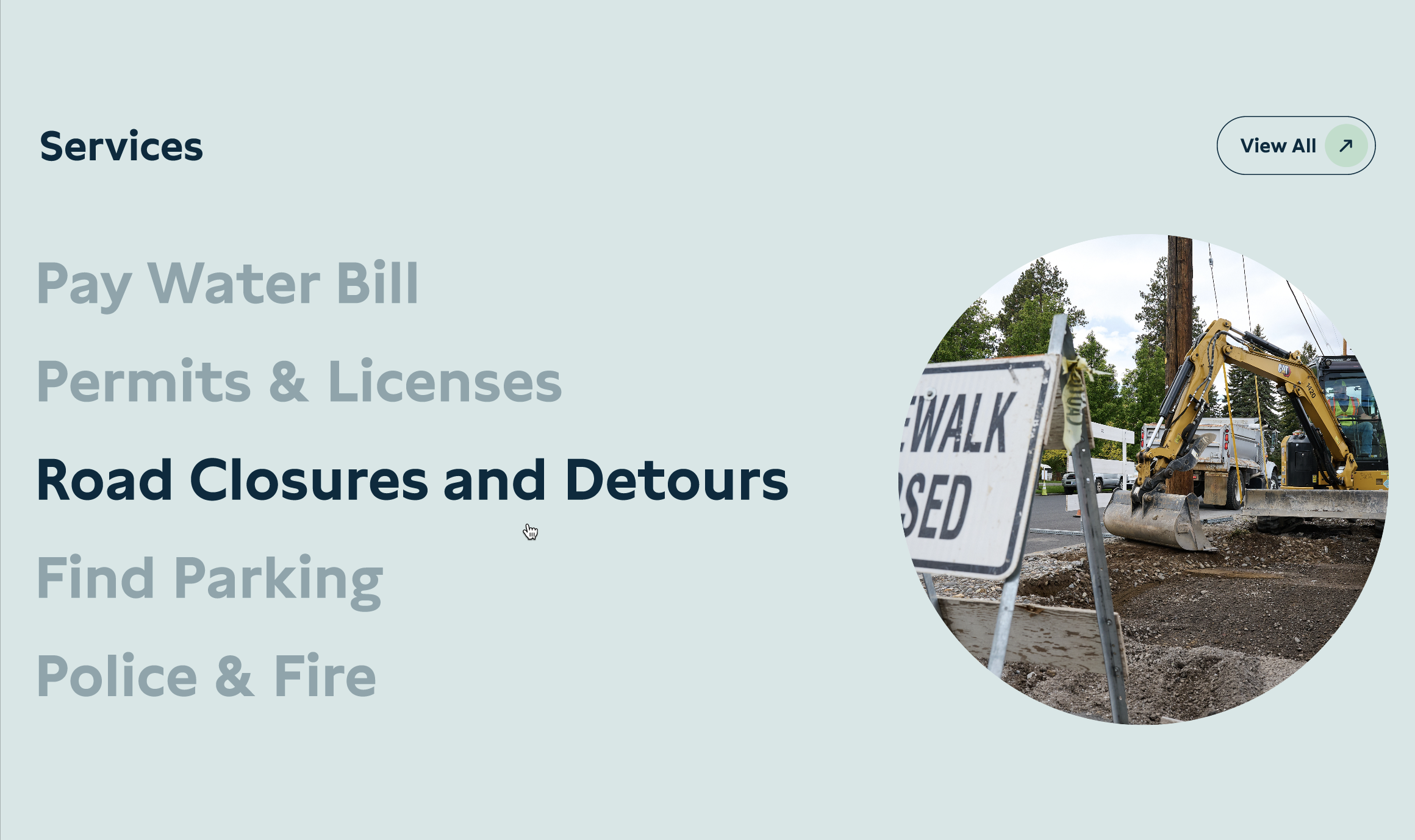2026
Government service delivery reimagined.
Role
Product Designer
Team Size
10
Platform
Web / Mobile
Tool Stack
Miro / Optimal Workshop / Useberry / Claude / CoPilot / Figma / WordPress
Opportunity
The City of Bend website receives roughly 1.6 million views per year and serves as the primary source for essential city services—yet it wasn't meeting community needs. After years of advocacy, user research, and strategic alignment with senior leadership, I led my team in convincing the organization to leave its legacy govtech CMS and partner with a design agency to build a municipal website unlike any other.
Research & Discovery
As part of an early-stage redesign effort, we partnered with research firm Sitecrafting to understand how the Bend community used the website, which tasks they came to complete, and where improvements were needed. Our research included stakeholder workshops, Google Analytics analysis, on-site feedback collection, a community survey, top-task analysis, and tree testing.
Through this research, we found that:
Community members reported confusion regarding permits.
Community members have a lot of questions about parking in the city.
Paying water bills online is difficult for community members.
The Search functionality on the website can be improved.
In general, the website is hard to navigate, and finding information is difficult.
We've since made IA and content updates to address the first three issues—permitting, parking, and water bill payment—but our aging CMS severely limited our ability to improve search and make necessary improvements to the sitemap and overall IA.
Implementation
Through a strategic partnership with Moxie Sozo—an independent branding and design agency and winner of Ad Age's 2025 Small Agency of the Year (Silver)—we positioned ourselves to launch a completely reimagined website for the City.
Content optimized for clarity and accessibility.
In addition to ensuring the site meets or exceeds WCAG 2.1 AA standards, we're systematically auditing content—removing unnecessary pages, consolidating where it makes sense, and building new pages where context was missing. We're rewriting copy at an 8th-grade reading level, which improves comprehension for most users and makes automated translation tools and screen readers far more effective. We're eliminating jargon, spelling out acronyms, and breaking up dense text blocks.
Audience-centered, data-informed information architecture.
Users no longer need to know which department or division provides a service. Instead, services are organized to align with user mental models.
To develop a task-based IA, I reviewed the top tasks identified by Sitecrafting, the past year's site analytics, and the City's current navigation. Prioritizing the top-task analysis and analytics data, I used AI-assisted ideation to develop a task-oriented navigation structure aligned with user mental models.
Through many iterations and stakeholder meetings, I identified three possible sitemaps:
From there, I conducted tree testing with a sample size of over 200 to identify which to proceed with, analyzed the data, and further refined the sitemap with the help of my AI assistant.
User-first, clean, modern design.
Increased negative space allows content to breathe, making it easier for users to focus and process information.
Enhanced visual design through a more vibrant color palette, engaging graphic elements, and stronger photography—particularly featuring community members and City staff in action. This adds context, increases engagement, and breaks up text to improve comprehension.
Circle motif representing unity and connectedness, drawn from the Bend logo and integrated throughout the site design.
Navigation
Perhaps the most significant update is the vastly improved top navigation bar.
The hamburger menu reduces page clutter by collapsing all menu items under one button. On the current site, the top of every page is dominated by unrelated links.
Prominent, persistent search bar. Given the critical role of search in findability, we made the search bar always accessible and implemented a significantly improved search tool.
In-page navigation is prominently displayed, allowing users to jump directly to specific sections of content.
3-Panel Hamburger Menu
The new menu's three-panel structure allows for more menu options than the current site supports, enabling users to navigate three levels deep from any page without overwhelming them.
“Services" as the first menu item emphasizes the site's service-oriented focus.
Explainer text below menu headings provides additional context.
Now and Noteworthy
Directly below the hero section on the homepage, this module highlights the City's top priorities and projects the community cares about—think trending. Content includes construction projects, wildfire preparedness information, and other timely updates.
Services
Next on the homepage is a clear, prominent Services section, offering an easy way for visitors to access the top services identified through user research.
Results
Scheduled to launch in late January 2026, this redesign positions the City to start the new year with a modern, user-centered digital presence.
To see the iterative process behind the final product, explore the working Figma file.

